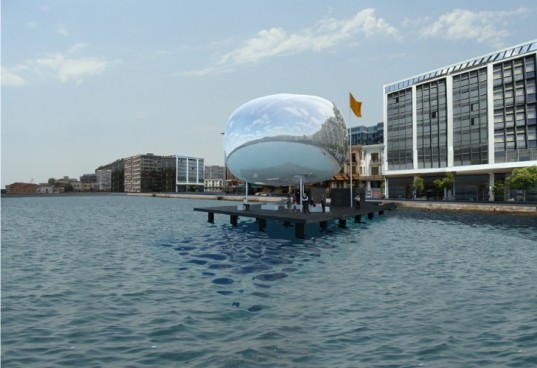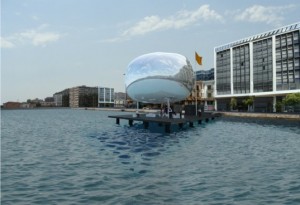

The Thessaloniki Water Transport system makes use of four piers (Eleutheria Square, Megaro, Aretsou, Perea) around the Greek city to pick up and drop off ferry passengers. Giannikis SHOP proposed a pavilion for each that consists of three elements: the floor, the pavilions and an inflated pneumatic structure. Their concept places importance on functionality, economy and innovation. Passengers walk out onto the pier and pay for their ride at the ticket office or can use the restroom in one of two rough wood plank buildings. These buildings also house a small cafe and storage room for use by the transport company. Stone block seating and LED lighting are integrated into the pavilion and other materials were chosen for their durability and low maintenance properties.
Most notably, the piers stand out because of the shiny, inflatable structures situated above the pier, which provide shade for the passengers waiting below. The moderate climate eliminates the need for an enclosed waiting area and thus reduces cost to heat or cool the area. The steel columns support the structure, which is made out of BoPET, a highly reflective synthetic film used on the sides, and ETFE, transparent synthetic film used on the top and bottom. Sunlight filters in through the top and is captured by solar cells that generate electricity for use on the pier. Rainwater is harvested from three cone-shaped hollows on the top of the structure, which direct the water to a holding tank below the pier. This water is used throughout the pavilion and combined with the solar generating capabilities allows the entire facility to be completely self-sufficient.

 Follow
Follow